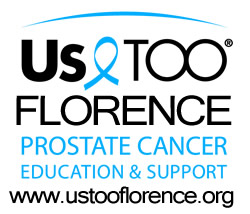|
||||||||
| Home | News You Can Use |
About Us TOO Florence |
Personal Journeys | Slideshows | Contact Us | |||
| Each man's Journey is listed under his BASIC treatment. When you click on one of the names to read a particular Journey, you may see one or more different treatments in bold lettering immediately above the Journey text. You will see (Recurrence) if they are due to a recurrence. Otherwise, they will be treatments used in conjunction with the basic treatment, i.e. Lupron with External Beam Radiation or External Beam Radiation with HDRT/Brachytherapy, etc. | |
Active Surveillance Alternative (Natural) Therapy Cryoablation - Freezing Hormone Therapy Radiation - Brachytherapy Radiation - External Beam Radiation - HDRT Surgery - Open Surgery - Robotic |
My Personal Prostate Cancer Journey - Bob Hefty Having urinary issues and no luck with various patent medicines on my own convinced me to see a reputable urologist in the Coos Bay Area. After bringing him up-to-date regarding my urination problems, he invited me to drop my pants and bend over the table. Thus began the digital rectal exam (DRE). Not being pleased with how my prostate felt, he indicated that further examination was required, starting with a PSA test. The results of that test, being 7.7, only corroborated what he felt during the DRE. With two strong indicators of prostate cancer, the next exam was a prostate biopsy to see if cancer could be present. This procedure wasn't as painful as I feared. After getting the results, the urologist called and set up an appointment to meet with my wife and me. We expected the worst and hoped for the best. The news wasn't good. I had prostate cancer! My biopsy report done at the Bay Area Hospital showed microscopic focus of adenocarcinoma in the right apex. The specimens were then sent to Dr. John McNeal at Stanford University for review and his findings were the same. He determined my Gleason Score was 4+3=7 (the "bad" 7) with 60% of the cancer being Gleason Grade 4. That was aggressive prostate cancer and certainly not good news. My next examination was a bone scan to see if the cancer had already escaped my prostate and spread to my bones. Thankfully, this scan was negative. In all likelihood, the cancer was still located in my prostate. The next step, as far as my wife and I were concerned, was to have it out; get rid of it once and for all. However, my insurance would only pay surgeons on their list and the urologist who made the diagnosis was not on their list. So, I looked to Oregon Urology Institute and made an appointment with Urologist Dr. Bryan Mehlhaff. He assured me that the tests indicated that the surgery my wife and I wanted would be an appropriate treatment. The date was set, December 6, 2000 and the surgery was performed. I stayed overnight at Sacred Heart Hospital in Eugene and went home the next day...without a prostate, but with a catheter to drain the urine while my urethra healed from the surgery. Following removal of my prostate, it was sent to a pathologist for a final review. His review contradicted the findings at Stanford University. This isn't out of the ordinary, because Dr. McNeal was examining only the tiny specimens from the needle biopsy, whereas the pathologist had the entire prostate to examine. The pathologist's report downgraded my prostate cancer to a Gleason Score of 3+4=7 (the "good" 7), and the Gleason Grade 4 was only 10% of the cancer. Had we chosen radiation of some form instead of surgery, we would not have had those results and would have continued living under the false prognosis of aggressive prostate cancer. The pathologist's report was great new! My latest PSA result as of May 2012 was 0.31. Dr. Mehlhaff suspects there is still some PSA hanging around, but it isn't behaving like prostate cancer and doesn't concern him beyond keeping an eye on it. I'm happy to say that I'm still making my small contribution to life. My wife and I will celebrate 54 years on August 14, 2013. I've had no further treatments since my surgery and am delighted to be a 12 year survivor - and counting. |
| www.ustooflorence.org Copyright © 2010 - 2025 | |

